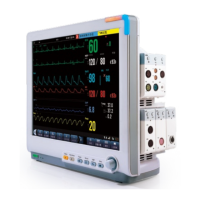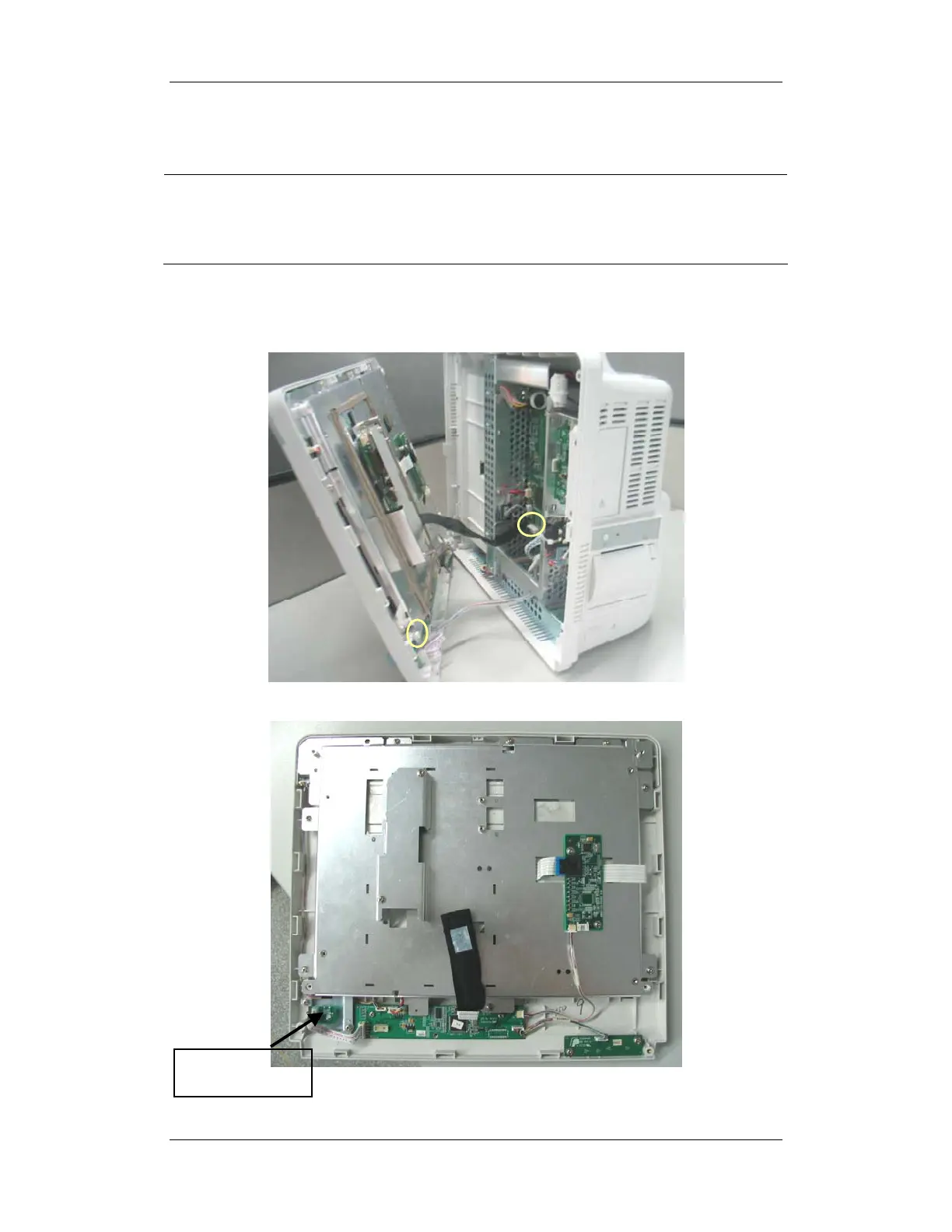4-3
4.6.2 Display Failures
Symptoms Possible Cause Corrective Action
Cables defective
or poorly
connected.
1. Check that the cable from the display to the
mother board and the cables from the backlight
board respectively to the button board and the
display are correctly connected.
2. Check that the cables and connectors are not
damaged.
Backlight board
defective
Replace the backlight board.
Power module
defective
Replace the power module.
Integrated display is
blank but the patient
monitor still works
correctly.
Display defective Replace the display.
Cables defective
or poorly
connected.
1. Check that the cable between the display and
the patient monitor is correctly connected.
2. Check that the cables and connectors are not
damaged.
Secondary display does
not function.
DVI interface
board defective
Replace the DVI interface board.
Cables defective
or poorly
connected.
1. Check that the cable between the display and
the patient monitor is correctly connected.
2. Check that the cables and connectors are not
damaged.
DVI interface
board defective
Replace the DVI interface board.
Secondary display
displays snows or
flashing specks
The mother board
is damaged.
Replace the mother board.
FPGA error. Update or upgrade FPGA. Images overlapped or
distorted
Cables defective
or poorly
connected.
1. Check that the cable between the display and
mother board is correctly connected.
2. Check that the cables and connectors are not
damaged.
Touchscreen does not
response
Touchscreen
disabled
Check if there is a symbol
shown above the
[Main Menu] QuickKey. If yes, press the [Main
Menu] QuickKey for more than 3s to enable the
touchscreen.

